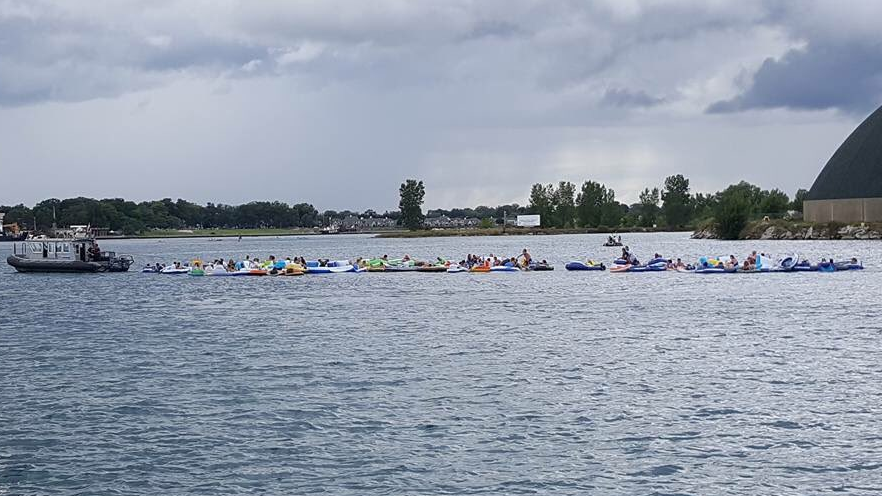1,500 Inner-Tube Rafters Enter Canada Illegally

A long-running mass inner tube event in Michigan ended unexpectedly Sunday with a trip to Canada, with so many Americans blown across the maritime border by wind that Canadian officials had to set up a temporary screening area for the inadvertent immigrants.
"There were Americans everywhere," Peter Garapick, a superintendent of search and rescue for the Canadian Coast Guard, speaking to the CBC. "There was no chance for anything floating or people on inner tubes to go anywhere but Canada."
The total cost to the Ontario municipality of Sarnia came to $8,000, including nineteen bus trips carrying the U.S. citizens back across the Bluewater Bridge to American soil.
For decades, crowds of as many as 6,000 inner tubers have drifted down the Saint Clair River from Lighthouse Beach in Port Huron to Chrysler Beach in Marysville, Michigan in the annual Port Huron Float Down. A mass border crossing is not unprecedented: last year, 1,800 people had to be towed back across the maritime border when wind blew them into Canadian waters.
The unplanned, illegal immigration made the news in Norway, Britain and China, among many other places.
"It's not a sanctioned marine event," said Lt. Robert Berry, Chief of Operations for USCG Sector Detroit, speaking in advance of the event. "The Coast Guard does not recommend participating . . . due to the inherent dangers in floating seven and a half miles down one of the busiest trans-border shipping lanes in North America."
The Sector added in a warning bulletin that alcohol consumption was a known hazard during Float Down.
Even if the event wasn't officially permitted, the USCG took the precaution of securing the river to motor vessel traffic for Sunday afternoon.
The Sarnia Police said that the response included the "Ontario Provincial Police, Canada Customs and Border Agency, RCMP and Canada Coastguard water units, Sarnia Transit, Canadian Red Cross, [and] security and fire personnel from the various chemical and petrochemical plants that border the St. Clair River."
